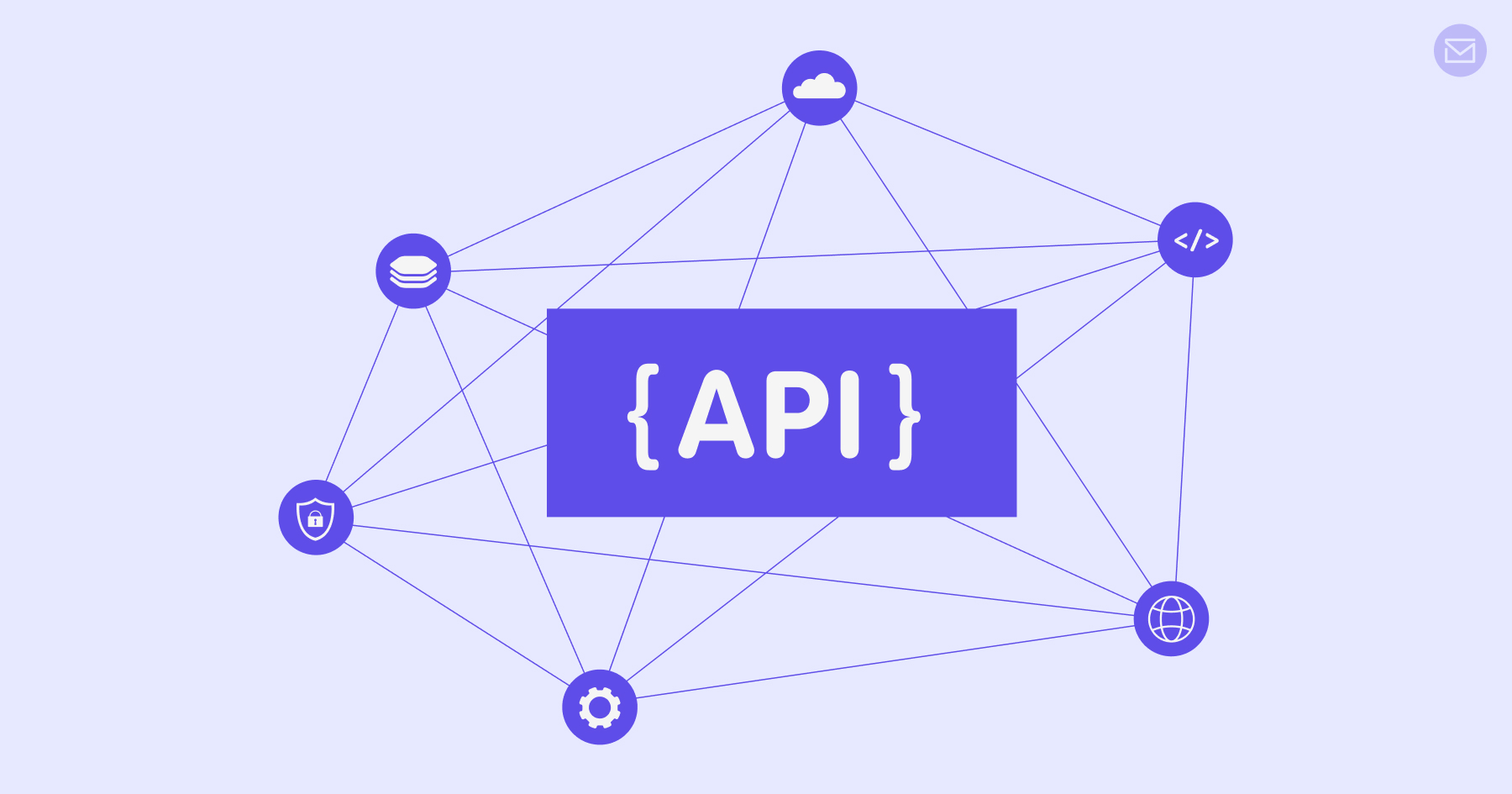SendPost Blog - Email API & SMTP
What are Email APIs & How Do They Work?

Emails aren’t just meant for your marketing team to maintain customer engagement. It’s the backbone of your product, making it functional.
How do you think users receive their password when they sign up on your platform or any notification like shipping details triggered due to user actions?
The irreplaceable soldiers working in the backend are – email APIs.
In this article, we will understand these email APIs and how they work to boost product adoption.
What are APIs?
An API is an Application Programming Interface that lets two or more technologies interact with each other. It’s a set of commands that takes the request and returns the responses in real time for execution.
In simpler words, it’s like the waiter in a restaurant who takes orders from the user and then goes into the backend to get exactly what you requested.
An email API allows you to borrow features of an email service provider and add those to your application. It means you won’t have to use another tool to send your emails and instead can integrate those exact functions within your application.
All applications are a collection of such APIs designed to perform a specific task for the users.
You can use email APIs to
- Send transactional emails
- Design and edit email templates
- Shoot bulk campaigns
- Analyze key email performance metrics.
Types of Email APIs
There are two types of email APIs that you can include in your application.
1. Transactional Email API
The APIs used to send purpose-built bulk notifications to the users are called transactional email APIs.
These notifications can be related to password reset links, newsletters, or action-based triggers.
2. Contextual Email API
Contextual Email APIs support the system by improving email connectivity. It allows synchronization, transfer, and analytics collection for emails.
What are the Benefits of Email API?
1. Faster Email Communication
Since email APIs directly communicate with the email servers, there is less back & forth, which improves the speed of email delivery.
2. Deep Personalization
You can personalize your notification triggers by plugging in email APIs in the application. You can even incorporate contextual APIs to enhance your product with detailed analytics.
3. Reliable Delivery
Sending an email might seem an easy task, but a lot of technical configurations are involved in the backend. Email APIs assure maximum delivery without getting affected by interruptions like internet outages or natural disasters. You also get more visibility into the delivery status.
4. Strict Security
Specific encrypted keys are necessary to implement and use email APIs. These keys are available with the parties sending and receiving requests, thus restricting the potential data theft.
Such data protection is uncompromisable to reduce phishing and spamming attacks.
5. Transparent Analytics
With email APIs, you can track the complete delivery report of your email campaign. Email APIs share valuable metrics, like successful delivery rate, ISP rejection, click rate, and open rate, with you to optimize your efforts.
6. Easy Implementation
Email APIs are ready-to-use and designed to cater to a bigger client base. It makes their implementation quick. It also limits the chances of configuration errors.
What are the Cons of Email APIs?
1. Needs Technical Know-how
Someone without any coding knowledge can’t implement email APIs in the system. You need at least one team member to work around the integration and develop a seamless connection.
2. Requires Regular Update
The job doesn’t finish with simply integrating email APIs. It requires regular monitoring and maintenance to sustain email delivery. And this consumes resources and time. Also, you will have to keep an eye out for the latest updates and introduce the same to your integrations.
How to Overcome the Limitations of Using Email APIs?
The answer is using an email API provider like SendPost. The team at SendPost built an email API that’s simple to integrate. After a one-time setup, you can count on SendPost to deliver your emails fast and reliably. No deliverability issues or delayed emails.
With SendPost, you can:
- Get native API SDKs in all popular programming languages (NodeJS, PHP, Python, Ruby, Java, C#, Golang, Rust and more) and clear API documentation.
- Send from your domain with SPF, DKIM, DMARC and TRACK records. Get started quickly on our shared IPs or scale email sending on dedicated IPs with zero hassle.
- Get stats for deliverability, bounce, open, click rate either through our API or through our webhooks.
How Does an Email API Work?
Let’s break down how email API works.
- Anyone using the application might press a button to execute an action. For example - someone clicks on the order button to make a purchase.
- The host application has embedded a particular API in the backend for that button press. So, the API will gather the relevant parameters and pass these to the server for a response.
- The server will take the request from the API and acknowledge it to process the response.
- The server will use the available database to share the information asked.
- Once the response is processed, the same API returns the data and presents it to the user.
What are the Things to Look For in an Email API?
1. Affordability
The price of email APIs is determined based on your email volume and the features you require.
And since migrating the setup to new email APIs can hit your resources badly, it’s better to make a wise decision at the consideration stage. Look for an email API service provider that justifies the price with the email volume it provides.
2. Integration
An API collection that speeds up the setup is the most significant advantage you would need.
That’s why I look for a well-maintained library that supports multiple languages. It will give you ease in building the application in a language you are comfortable with.
3. Delivery Rate
The hard work will only pay a reward if the delivery rate is as per expectation. Hence choose an email API that promises reliable and fast inbox delivery.
Trustworthy service providers will share this information publicly instead of keeping it secret. So, actively inquire about this aspect to make a wise decision.
4. Support
A reliable support team can not only make onboarding easier but also promises peace of mind for any future project.
Prioritize a service provider that supports 24/7, and their existing customers have positive things to say about their service.
5. Documentation
If your developers can’t get their heads around the APIs, there is no use for even the best APIs.
That’s why ensuring that all email APIs are supported by clear documentation for reference is critical. It will speed up the integration process, reducing the dependencies on the service provider.
6. Analytics
Unless you have visibility of your performance, you can’t make objective decisions. That’s why accurate analytics is a must for you to track your email delivery.
It will empower you to improve your email performance.
Are Email APIs Powerful Enough to Boost Your Business?
In all honesty, there is no dearth of use cases you can tackle with API integration. Some typical situations you can handle are
- Real-time notification for suspicious log-in.
- Password reset link.
- A purchase confirmation and receipt .
- Shipping details.
And so much more.
But is it worth investing in setting up the full integration at the expense of your time and money? If simple coding in your application can boost your email delivery rate to over 99%, then it’s totally worth it.
The effects will trickle down to better conversions and customer experience.









